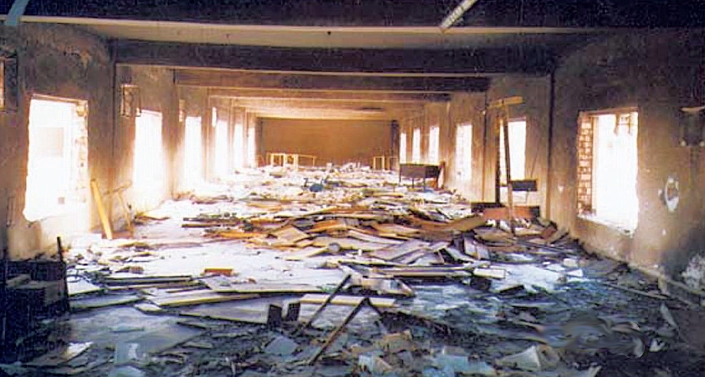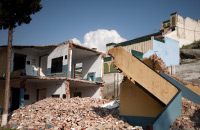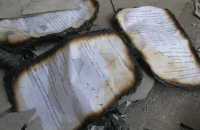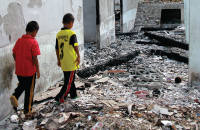Attacks on education are any intentional threat or use of force—carried out for political, military, ideological, sectarian, ethnic, religious, or criminal reasons—against students, educators, and education institutions.
Protecting Higher Education from Attack

The negative consequences of attacks on higher education affect not just universities, but also primary and secondary schools that depend on quality teachers trained at the tertiary level and on research that informs pedagogy and curriculum at all levels. Attacks on higher education institutions and personnel also cause a ‘brain drain’ as threatened scholars flee or are killed, diminishing the quality of education overall.
Attacks on higher education occur when states, opposition groups and other non-state actors view higher education institutions, professors and students as threats to their authority or as a means of gaining influence. When they are unable to control the sector, they often resort to intimidation, coercion and overt violence to block education, silence dissent and eliminate perceived opponents. Whether directed at whole institutions or individuals, such attacks can have chilling effects on the research, teaching and social functions of higher education, and may serve to warn of spreading repression and risks of open conflict.
Common attacks on higher education include:
-
political and military violence or use of force against students, academics, university personnel, and higher education officials
-
arbitrary, illegal or unjust arrest, detention or imprisonment
-
torture killing and injury
-
forced disappearance or kidnapping
-
forced recruitment into armed groups or forces
-
damage and destruction of higher education buildings and facilities
-
military use of higher education facilities
-
use of buildings as barracks or bases for operations
-
use of buildings for detaining or interrogating prisoners
-
threats of any of the above
Attacks on higher education affect all levels of education. Students and professors who are silenced, forced to flee, or killed leave behind a weakened education system, reducing the quality of education overall. Primary and secondary schools depend on teachers trained in higher education institutions, and on research that informs pedagogy and teaching methods. Students aspiring to the next stage in their education find their opportunities abruptly curtailed. These attacks crack the basic foundation of a functioning society; a society’s loss of academic capital causes disruptions that can take generations to heal. Iraq is a tragic example, with professors, scientists, and administrators being common targets of assassination. Many more have been kidnapped and their families targeted or threatened. Those who have braved return to Iraq have found a higher education system that is struggling to rebuild in the midst of civil conflict, sectarian violence and political instability. More recently,Syrian universities have been bombed, occupied and closed by armed forces claiming control of academic buildings and facilities. Lives have been lost and students and professors have joined the masses of refugees seeking safety and education abroad. Many of those who remain have been threatened for their perceived political leanings, lectures in the classroom or religious or ethnic identities.
Attacks on higher education are not isolated to any territory or discipline. Organizations assisting higher education personnel report that students, professors and administrators have been targeted in every region of the world. Junior, advanced and senior scholars in the sciences, social sciences, arts, and humanities have suffered, while entire institutions have fallen prey to political agendas and violence.
Responses to attacks on education need to extend beyond situations of armed conflict, into parts of the world in which education is repressed, balkanized or highly politicized. Current responses include physical protection, alternative delivery of education, advocacy, and research and development of higher education.
GCPEA’s role in protecting higher education
GCPEA aims to understand the causes of attacks on higher education, to help develop better protection measures, and to illustrate how the protection of higher education links to greater protection of education at all levels. One way it seeks to do this is to examine the intersection between institutional autonomy and security at higher education institutions.
In November 2013, GCPEA released its report Institutional Autonomy and the Protection of Higher Education from Attack. The report suggests that institutional autonomy plays a direct and indirect protective function. It directly helps protect systems of higher education from government interference, making it more difficult for states to act as perpetrators. It also indirectly helps preserve higher education against actual and perceived politicization and ideological manipulation, which in turn might help insulate it from attacks by non-state parties.
The report identifies four areas of state responsibility in relation to security of higher education: (1) responsibility to refrain from perpetrating attacks, directly or indirectly; (2) responsibility to refrain from complicity in attacks; (3) responsibility to investigate incidents in an open and transparent way; and (4) responsibility to deter future attacks, including by holding perpetrators accountable in ways consistent with internationally recognized standards.
The need for action was further emphasized in February 2014, when GCPEA released Education Under Attack 2014. The report documents attacks on higher education in 28 of the 30 countries where there had been significant patterns of attacks on education between 2009 and 2012. Notably, attacks were not limited to any one region of the world and occurred both within and outside armed conflicts. The report also contains a thematic essay, exploring why attacks on higher education occur and how they might be prevented or their impact reduced.
As follow-up to these reports, GCPEA developed and sought wide recognition of a statement of Principles of State Responsibility to Protect Higher Education from Attack. The primary purpose of the Principles is not to create new legal obligations but rather to highlight existing normative frameworks that oblige states to:
-
abstain from direct or complicit involvement in attacks on higher education
-
protect higher education against present and future attacks
-
assist victims of attacks, and
-
deter future attacks, including by investigating attacks and holding perpetrators accountable.
Higher education institutions are encouraged to demonstrate support for these Principles, to assist states in reviewing national policies and laws, and to take all reasonable measures to assist victims and help deter future attacks.
The process of drafting, circulating, and seeking endorsement of the Principles engaged key stakeholders – especially states and members of the international higher education sector in Africa, Europe, the Middle East, and the Americas - in an open conversation about the importance of protecting higher education and freeing the sector to fulfill its vital educational, scientific, economic, and cultural roles.
So far, the Principles have been endorsed by higher education associations representing over 1,200 universities, 120,000 researchers, and 11 million students in 57 countries. Organizations working in higher education who wish to endorse the Principles can find a template letter to do so here or contact gcpea@protectingeducation.org for more information.
- Immediate and full investigation of all attacks, with appropriate prosecution and sentencing of perpetrators;
- Safety assessment and risk analysis mechanisms;
- Increased coordination between educational institutions and the National Security directorate, Ministry of Defense, and others;
- Assistance for victims of attacks, including by providing psychosocial and medical support;
- Secure housing, transport, and infrastructure; and
- Prevention of the use of higher education facilities for military purposes during armed conflict, to avoid turning the university into a target for attack by opposing forces, including by following the Guidelines for Protecting Schools and Universities from Military Use during Armed Conflict and endorsing the Safe Schools Declaration.
GCPEA has also made successful efforts to ensure safe, secure, quality education everywhere by advocating for the inclusion of relevant language in international standard-setting documents. On July 2, 2015, the UN Human Rights Council (HRC) adopted Resolution 29/7 on the right to education. The resolution included substantial language that GCPEA had sought on state responsibility to protect higher education from attack. Specifically, the HRC urged “all States to comply with their responsibilities under international law, and also urges them to strengthen the protection of schools and universities, as well as other educational settings, from attacks by reviewing national laws to ensure that attacks on schools and universities are criminalized, where appropriate; investigating attacks on schools and universities, and prosecuting and punishing those responsible, as appropriate; making every effort to collect reliable relevant data with respect to attacks on schools and universities; and providing assistance to victims, on a non-discriminatory basis, towards the full realization of the right to education.”
The inclusion of this language is an important development. Through the Resolution, the Council clearly recognizes state responsibilities under existing international legal standards to protect higher education from attack through measures such as investigating attacks and holding perpetrators accountable. The full text of the Resolution can be found here.
Education Under Attack 2014: Thematic Essay on military use of schools and universities
The Problem
Attacks on education violate the right to education and other internationally protected human rights applicable at all times.
Attacks on students, educators, and education institutions can have a devastating impact on access to education and education systems and on a society’s overall development in the long-term.



